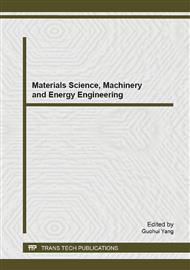p.264
p.270
p.276
p.282
p.291
p.297
p.302
p.306
p.312
Design and Test of a Lab-Scale Vanadium Redox Flow Battery Cell Considering Electrolyte Feeding Structure for Solar Energy
Abstract:
This paper describes the design and test of a lab-scale vanadium redox flow (VRF) battery considering electrolyte feeding and flow structure. The VRB battery has emerged as the promising technology for energy storage technologies. The VRF battery an electrochemical energy storage device chemically, and physically VRF battery is a sandwich type structure, and it consists of a cell stack, two electrolyte reservoirs, two pumps and an electrolyte flow tube. The cell stack has numerous single cells, and it has two half-cells which consist of an electrode, a carbon felt, a sealant PVC frame, and there is an ion-exchange membrane separating two half-cells. The VRF battery is applied electrolyte feeding and flow technology, and one of energy storage system without memory effect and self-discharge. This paper focuses design of liquid electrolyte feeding and flow mechanism, and considering inverse concept of electrolyte feeding structure for the vanadium flow battery. In addition, in order to get the specific flow rate (SFR) of electrolyte, numerous experiments were carried out, and the parameter and governing equations was obtained.
Info:
Periodical:
Pages:
291-296
Citation:
Online since:
December 2013
Authors:
Price:
Сopyright:
© 2014 Trans Tech Publications Ltd. All Rights Reserved
Share:
Citation:


